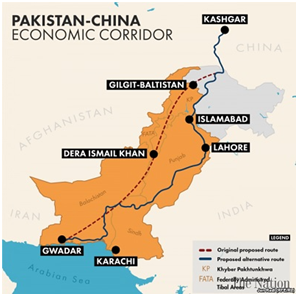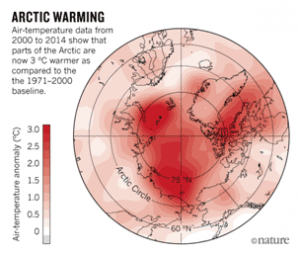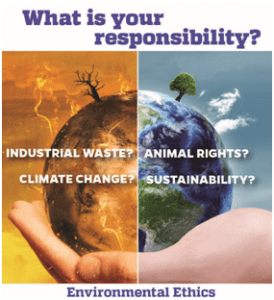DAILY CURRENT AFFAIRS (AUGUST 19, 2022)
THE GOVERNANCE
1. MANDLA: FIRST ‘FUNCTIONALLY LITERATE’ DISTRICT
THE CONTEXT: Tribal-dominated Mandla district of Madhya Pradesh has become the first completely “functionally literate” district of India. During 2011 survey, literacy rate in Mandla district was 68%. Another report of 2020 highlights that, more than 2.25 lakh people in this district were not literate, most of them were tribals from forest areas.
THE EXPLANATION:
• Tribals were frequently complaining to authorities regarding money frauds they were facing. Main reason for this was that tribals were not functionally literate.
• To make people functionally literate, a major campaign was launched on Independence Day 2020, in association with the school education department, anganwadi & social workers, women and child development department, to educate women and senior citizens.
• With this campaign, entire district has turned into functionally literate district, within two years.
• Mandla is the first district of India to reach this mark, where people were able to write their names, read and count.
Functional Literacy:
Functional illiteracy comprises of reading and writing skills that are required to manage daily living and employment tasks. Such tasks require reading skills beyond basic level. It is opposite to illiteracy, which is defined as inability to read or write in any language. A person is called functionally literate when he or she is able to write his or her own name, count and read & write in Hindi or in language other than the predominant language.
THE INTERNATIONAL RELATIONS
2. CHINA’S FUNDING CPEC REDUCED BY 56%
THE CONTEXT: In first half of 2022, China’s funding in Pakistan for China Pakistan Economic Corridor (CPEC) had reduced by around 56% in the first half of 2022. Other countries like Russia, Egypt and Sri Lanka also witnessed a reduction by 100% in BRI engagement as compared to first half of 2021.
THE EXPLANATION:
The CPEC project is running from Gwadar port in Pakistan to Kashgar city in Xinjiang, China. However,
• This project is not running in accordance with the initial promise, because of lack of transparency, debt problems, poor management, and corruption. Because of these issues, CPEC project is still not finished.
• It is also going through other security challenges because of local opposition and continued attack on project and personnel in Pakistan.
• Furthermore, Pakistan’s deteriorating economic situation is also impacting the project.
• As per reports, China recently asked for its military presence in Pakistan in order to look after security of its people and projects in country.
• Belt and Road Initiative (BRI) projects of China is facing global criticism as it is not offering transparency on its loans. Furthermore, its faulty design raising questions the value and sustainability of the project.
But, why is India concerned?
• It passes through PoK.
• CPEC rests on a Chinese plan to secure and shorten its supply lines through Gwadar with an enhanced presence in the Indian Ocean. Hence, it is widely believed that upon CPEC’s fruition, an extensive Chinese presence will undermine India’s influence in the Indian Ocean.
• It is also being contended that if CPEC were to successfully transform the Pakistan economy that could be a “red rag” for India which will remain at the receiving end of a wealthier and stronger Pakistan.
• Besides, India shares a great deal of trust deficit with China and Pakistan and has a history of conflict with both. As a result, even though suggestions to re-approach the project pragmatically have been made, no advocate has overruled the principle strands of contention that continue to mar India’s equations with China and Pakistan.
VALUE ADDITION:
About China–Pakistan Economic Corridor (CPEC)
• CPEC is a cluster of infrastructure projects under construction in Pakistan. It was started in 2013. Original value of the project is USD 47 billion but now its value has increased to over USD 62 billion.
• This project is aimed at upgrading required infrastructure in Pakistan and strengthen its economy by providing modern transportation networks, energy projects, and special economic zones as a part of CPEC.
THE HEALTH ISSUES
3. WEST NILE VIRUS
THE CONTEXT: In New York, the number of mosquito pools that tested positive for West Nile virus is the “highest number ever recorded” at 1,068 across the five boroughs, compared with 779 positive pools this time when compared to 2021.
THE EXPLANATION:
What is West Nile Virus?
• It is a mosquito-borne, single-stranded RNA virus.
• It is a member of the flavivirus genus and belongs to the Japanese encephalitis antigenic complex of the family Flaviviridae.
• It is commonly found in Africa, Europe, the Middle East, North America and West Asia.
• Transmission : Culex species of mosquitoes act as the principal vectors for transmission.
o It is transmitted by infected mosquitoes between and among humans and animals, including birds, which are the reservoir host of the virus.
o It can also spread through blood transfusion, from an infected mother to her child, or through exposure to the virus in laboratories.
o It is not known to spread by contact with infected humans or animals.
o To date, no human-to-human transmission of WNV through casual contact has been documented.
• Impact : It can cause neurological disease and death in people.
• Detection of WNV
o The virus was first isolated in a woman in the West Nile district of Uganda in 1937.
o It was identified in birds (crows and columbiformes like doves and pigeons) in the Nile delta region in 1953.
o Before 1997, WNV was not considered pathogenic for birds, but then, a more virulent strain caused the death in Israel of different bird species, presenting signs of encephalitis and paralysis.
• Preventive measures
o This vector-borne disease can be prevented by protecting one-self from mosquito bites.
o Other steps are wearing clothing that acts as a barrier to exposure to bites, reducing breeding sites, covering water storage containers, eliminating puddles and drainage of places where water accumulates, eliminating unusable containers where water pools, and controlling garbage in yards and gardens.
THE ECONOMIC DEVELOPMENT
4. CENTRE RAISES THRESHOLDS FOR PROSECUTIONS, ARRESTS UNDER CUSTOMS ACT
THE CONTEXT: Recently, the government has raised the thresholds for prosecutions and arrests under the Customs Act to ₹50 lakh from ₹20 lakh for smuggling and illegal imports of goods in baggage, and from ₹1 crore to ₹2 crore for cases involving commercial fraud.
THE EXPLANATION:
• According to the Government, these value-related thresholds will not apply for offences relating to fake currency notes, arms, ammunitions and explosives, antiques, art treasures, wildlife items and endangered species of flora and fauna. “In such cases, arrest, if required, on the basis of facts and circumstances of the case, may be considered irrespective of value of offending goods involved”.
• The civil proceedings would continue for duty, interest and penalty recovery; prosecution and arrest would be initiated in cases where the financial severity is high”.
VALUE ADDITION:
What is Custom Duty?
• Customs duty refers to the tax imposed on goods when they are transported across international borders.
• In simple terms, it is the tax that is levied on import and export of goods.
• Custom duty in India is defined under the Customs Act, 1962, and all matters related to it fall under the Central Board of Excise & Customs (CBEC).
• The government uses this duty to raise its revenues, safeguard domestic industries, and regulate movement of goods.
• The rate of Customs duty varies depending on where the goods were made and what they were made of.
Types of custom duty
• Basic Customs Duty (BCD): It is the duty imposed on the value of the goods at a specific rate at a specified rate of ad-valorem basis.
• Countervailing Duty (CVD): It is imposed by the Central Government when a country is paying the subsidy to the exporters who are exporting goods to India.
Additional Customs Duty or Special CVD: It is imposed to bring imports on an equal track with the goods produced or manufactured in India.
• Protective Duty: To protect interests of Indian industry.
• Safeguard Duty: It is imposed to safeguard the interest of our local domestic industries. It is calculated on the basis of loss suffered by our local industries.
• Anti-dumping Duty: Manufacturers from abroad may export goods at very low prices compared to prices in the domestic market. In order to avoid such dumping, ADD is levied.
THE ENVIRONMENT, ECOLOGY AND CLIMATE CHANGE
5. WHAT IS CAUSING ARCTIC WARMING?
THE CONTEXT: Recently, the Finnish Meteorological Institute researchers published their study in the Communications Earth & Environment journal, concluding that the Arctic is heating four times faster than the rest of the planet.
THE EXPLANATION:
The warming is more concentrated in the Eurasian part of the Arctic, where the Barents Sea north of Russia and Norway is warming at an alarming rate — seven times faster than the global average.
What is Arctic amplification? What causes it?
• Global warming, the long-term heating of the earth’s surface, expedited due to anthropogenic forces or human activities since pre-industrial times and has increased the planet’s average temperature by 1.1 degrees Celsius. While changes are witnessed across the planet, any change in the surface air temperature and the net radiation balance tend to produce larger changes at the north and south poles. This phenomenon is known as polar amplification; these changes are more pronounced at the northern latitudes and are known as the Arctic amplification.
activities since pre-industrial times and has increased the planet’s average temperature by 1.1 degrees Celsius. While changes are witnessed across the planet, any change in the surface air temperature and the net radiation balance tend to produce larger changes at the north and south poles. This phenomenon is known as polar amplification; these changes are more pronounced at the northern latitudes and are known as the Arctic amplification.
• Among the many global warming-driven causes for this amplification, the ice-albedo feedback, lapse rate feedback, water vapour feedback and ocean heat transport are the primary causes. Sea ice and snow have high albedo (measure of reflectivity of the surface), implying that they are capable of reflecting most of the solar radiation as opposed to water and land. In the Arctic’s case, global warming is resulting in diminishing sea ice.
• As the sea ice melts, the Arctic Ocean will be more capable of absorbing solar radiation, thereby driving the amplification. The lapse rate or the rate at which the temperature drops with elevation decreases with warming. Studies show that the ice-albedo feedback and the lapse rate feedback are responsible for 40% and 15% of polar amplification respectively.
What are the consequences of Arctic warming?
• The causes and consequences of Arctic amplification are cyclical — what might be a cause can be a consequence too.
• The Greenland ice sheet is melting at an alarming rate, and the rate of accumulation of sea ice has been remarkably low since 2000, marked by young and thinner ice replacing the old and thicker ice sheets. The Greenland ice sheet saw a sharp spike in the rate and extent of melting between July 15-17 this year. The unusual summer temperatures resulted in a melt of 6 billion tonnes of ice sheet per day, amounting to a total of 18 billion tonnes in a span of three days, enough to cover West Virginia in a foot of water.
• Greenlandic ice sheet holds the second largest amount of ice, after Antarctica, and therefore it is crucial for maintaining the sea level. In 2019, this was the single biggest cause for the rise in the sea level, about 1.5 metres. If the sheet melts completely, the sea level would rise by seven metres, capable of subsuming island countries and major coastal cities.
• The warming of the Arctic Ocean and the seas in the region, the acidification of water, changes in the salinity levels, is impacting the biodiversity, including the marine species and the dependent species. The warming is also increasing the incidence of rainfall which is affecting the availability and accessibility of lichens to the reindeer. The Arctic amplification is causing widespread starvation and death among the Arctic fauna.
• The permafrost in the Arctic is thawing and in turn releasing carbon and methane which are among the major greenhouse gases responsible for global warming. Experts fear that the thaw and the melt will also release the long-dormant bacteria and viruses that were trapped in the permafrost and can potentially give rise to diseases. The best-known example of this is the permafrost thaw leading to an anthrax outbreak in Siberia in 2016, where nearly 2,00,000 reindeer succumbed.
What is the impact on India?
• In recent years, scientists have pondered over the impact the changing Arctic can have on the monsoons in the subcontinent. The link between the two is growing in importance due to the extreme weather events the country faces, and the heavy reliance on rainfall for water and food security.
• A study titled ‘A possible relation between Arctic sea ice and late season Indian Summer Monsoon Rainfall extremes’ published in 2021 by a group of Indian and Norwegian scientists found that the reduced sea ice in the Barents-Kara sea region can lead to extreme rainfall events in the latter half of the monsoons — in September and October.
• The changes in the atmospheric circulation due to diminishing sea ice combined with the warm temperatures in the Arabian Sea contribute to enhanced moisture and drive extreme rainfall events. In 2014, India deployed IndARC, India’s first moored-underwater observatory in the Kongsfjorden fjord, Svalbard, to monitor the impact of the changes in the Arctic Ocean on the tropical processes such as the monsoons.
• According to the World Meteorological Organization’s report, ‘State of Global Climate in 2021’, sea level along the Indian coast is rising faster than the global average rate. One of the primary reasons for this rise is the melting of sea ice in the polar regions, especially the Arctic. The Arctic amplification furthers the idea that “what happens in the Arctic does not remain in the Arctic” and can substantially affect tropical processes far south.
THE PRELIMS PERSPECTIVE
6. EXERCISE UDARASHAKTI
THE CONTEXT: Recently, the Exercise UDARASHAKTI between the Indian Air Force (IAF) and the Royal Malaysian Air Force (RMAF) culminated at the RMAF Air Base Kuantan on 16 Aug 2022.
THE EXPLANATION:
• In Udarashakti 2022, Indian Air Force is taking part in air exercise with Su-30 MKI and C-17 aircraft.
• On the other hand, Malaysian Air Force is taking part with Su 30 MKM aircraft.
• During the four days, various aerial combat drills will be conducted between two Air Forces.
Significance of the exercise include;
• Exercise will secure the long-standing bond of friendship and enhance the line of defence cooperation between both the armies. Thus, it will strengthen security in the region.
• Through this exercise, IAF will get an opportunity to share and learn best practices with the Royal Malaysian Air Force. They would also discuss mutual combat capabilities.
Background:
The first bilateral Air Force exercise that staged frontline Sukhoi-30 combat aircraft was conducted in 2018. From 2008 to 2010, the Indian Air Force Training Team was deployed in Malaysia to give training to Malaysian pilots on the SU-30SKM aircraft.
NOTE: Harimau Shakti is Joint military exercises which are held annually between the two countries.
7. VOSTOK-2022 MILITARY EXERCISES
THE CONTEXT: According to China’s defence ministry, The People’s Liberation Army of China will participate in “Vostok-2022 strategic command and staff exercise” which is scheduled to take part in Russia. Armies of India, Tajikistan, Mongolia and Belarus will also take part in the exercise.
THE EXPLANATION:
• The Vostok 2022 strategic command and staff exercise will take place from August 30 to September 5, 2022.
• It will be held across 13 training facilities in Eastern Military District under the direction of Valery Gerasimov.
• Indian Army has not yet issued an official statement on their participation in the exercise.
• Chinese military participation in Vostok 2022 is not associated with current international and regional situation by any means. However, main objective of its participation is to strengthen practical and cordial relation with militaries of other participating nations, boost its capacity against various security threats and elevate its bar for strategic coordination.
• Participating soldiers will rehearse maintaining military security in eastern region.
China–Russia relations:
China and Russia strengthened their diplomatic relation after the establishment of Russian Federation in 1991. Land border between both the countries was demarcated in 1991. They inked Treaty of Good-Neighborliness and Friendly Cooperation in 2001. This treaty was renewed recently in June 2021 for five more years. Both the countries enjoy close military, economic, and political relations as well as extend support to each other on multiple global issues.
